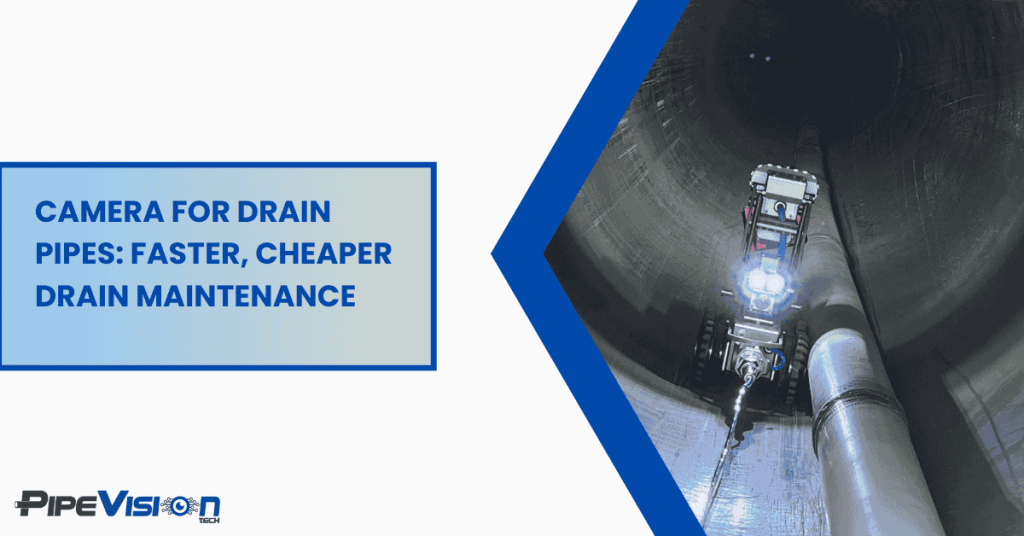Blogs
Camera for Drain Pipes: Faster, Cheaper Drain Maintenance
Introduction
For municipalities, engineers, and construction managers, maintaining underground infrastructure is a constant battle between aging systems, stretched budgets, and growing public expectations. Traditional methods of identifying problems in drainage and sewer systems often involve guesswork, excavation, and heavy manpower—all of which are costly and disruptive.
Enter the sewer camera: a modern tool that streamlines diagnosis and reduces repair costs. By using a sewer line camera inspection, cities and contractors can see inside pipelines in real time, making maintenance more accurate, less invasive, and far more cost‑effective.
Pinpoint Problems Without Excavation

Historically, locating a damaged pipe meant digging large areas just to find the source of the issue. According to the U.S. Environmental Protection Agency (EPA), excavation can cost anywhere from $4,000 to $12,000 per project, depending on depth and location.
With a camera for drain pipes, crews can feed a specialized camera into the system and immediately visualize cracks, blockages, or root intrusions. This removes the guesswork, cutting unnecessary excavation by up to 80%, and ensures decision-makers fix the precise problem area instead of tearing up large sections of roads.
Faster Diagnosis, Quicker Repairs with drain pipe inspection camera
Speed directly impacts cost. A traditional manual survey can take 2–3 days of crew time, between excavation, cleaning, and inspection. In comparison, a sewer line camera inspection typically takes only a few hours for the same length of piping.
This faster identification allows municipalities and contractors to move quickly from problem diagnosis to repair planning, keeping projects on schedule and minimizing downtime for local communities.
Cutting Labor Costs

Heavy labor costs eat up municipal budgets. Industry reports estimate that over 40% of pipeline repair project budgets are spent on labor alone. By employing a sewer camera, much of the manual digging and locating effort is eliminated.
The result: cities and contractors cut inspection team sizes in half, reduce overtime costs, and save thousands of dollars per project. Multiply that across dozens of yearly maintenance tasks, and the long-term savings become significant.
Extending the Lifespan of Infrastructure
Preventive maintenance is always less expensive than emergency repairs. For example, a small root intrusion costing around $500 to repair early on can escalate to a full pipe collapse costing $10,000+ if ignored.
With regular camera for drain pipes inspections, cities can detect those minor issues before they snowball into catastrophic failures. By addressing weaknesses early, municipalities can stretch infrastructure life cycles by 5–10 years, preserving budgets while ensuring reliability for residents.
Conclusion
For municipalities, engineers, and contractors, investing in the right inspection tools is crucial. Regular use of a camera for drain pipes cuts costly guesswork, reduces excavation by up to 80%, and extends pipeline life cycles.
If your team wants a deeper breakdown of how these systems actually work, check out our comprehensive Guide to Sewer Camera Systems: All You Need to Know. For those interested in seeing the results firsthand, you can also schedule a free demo of our Pipevision Sewer Camera Services.
Backed by proven industry data, including the EPA’s research on cost-effective rehab methods, it’s clear that smarter inspections save taxpayer dollars and improve public infrastructure outcomes.
By combining knowledge, the right technology, and proactive planning, your city or organization will be well-positioned for cost-effective, long-term infrastructure management.


